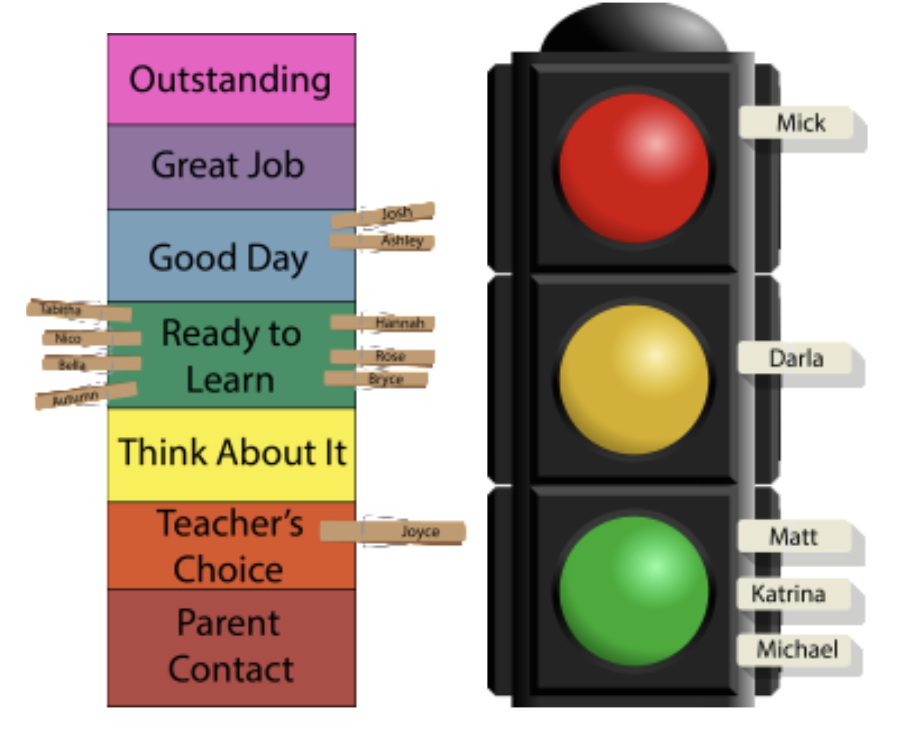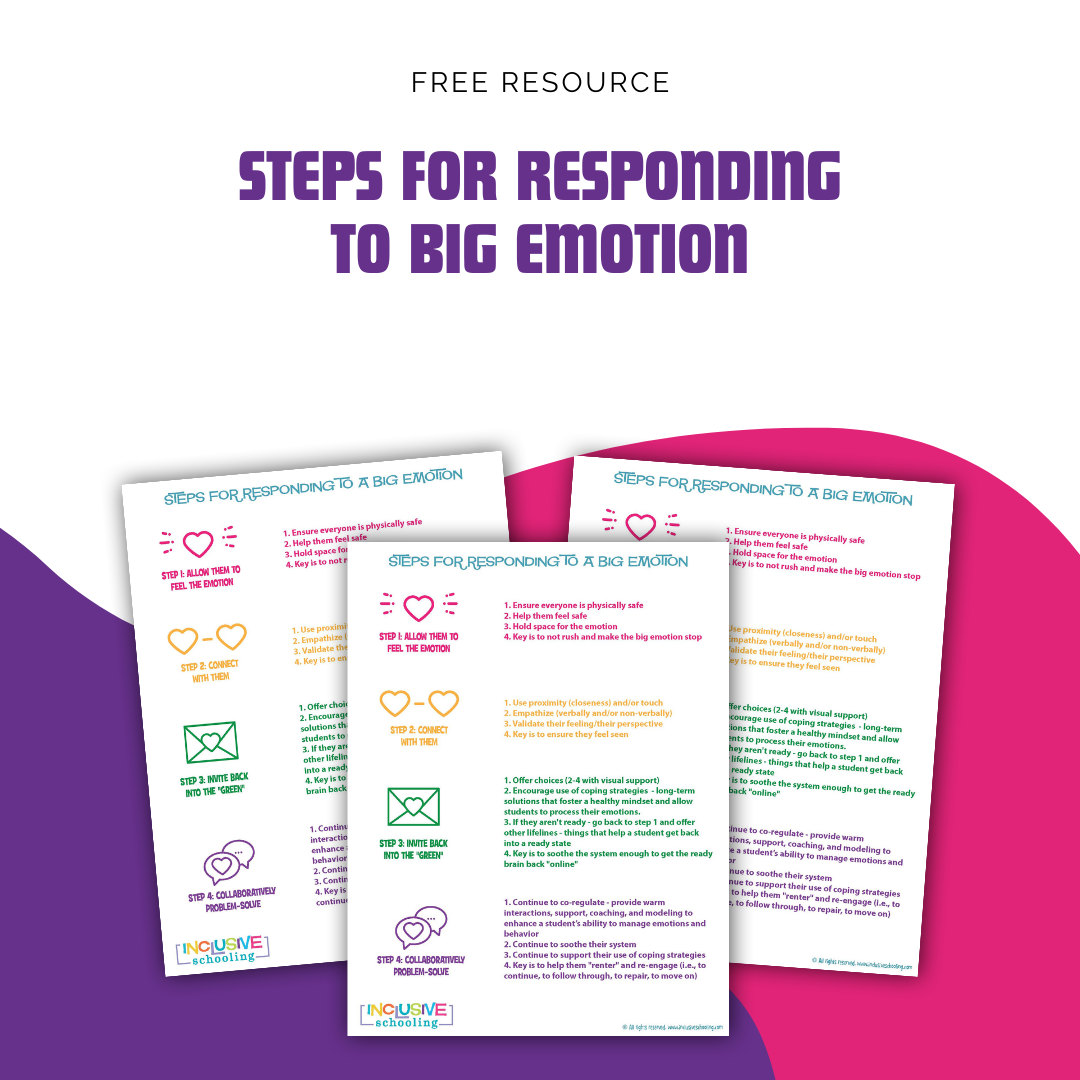A teacher shared a story with us about how one time when using behavior charts, she was moving a student's clip from yellow to red, and the student said, “Good! Go ahead! Then I don’t have to listen to you for the rest of the day!”
This is every teacher’s worst nightmare. The moment you find out that the tip or tool you are relying on to help a student learn has totally backfired.
 Yet, this scenario is all too common and emphasizes why we should bag behavior charts. You know, why we should eliminate the stop lights, the rainbow tabs with clips and clothespins with each student's name, the pockets with cards that are flipped from one color to another to represent a student's “status,” and even the “Superpower” trackers…charts and cards used for monitoring and displaying student's behavior.
Yet, this scenario is all too common and emphasizes why we should bag behavior charts. You know, why we should eliminate the stop lights, the rainbow tabs with clips and clothespins with each student's name, the pockets with cards that are flipped from one color to another to represent a student's “status,” and even the “Superpower” trackers…charts and cards used for monitoring and displaying student's behavior.
Despite our good intentions, there are significant problems with using these class-wide behavior charts as a means of helping young students self-regulate, remain engaged, and control their impulses.
The sad truth is, there isn’t an easy way to address the challenges we face in helping other humans learn these critical life skills. This is because learning things like self-regulation takes time. In fact, it takes humans decades to play a more conscious role in stopping, thinking, and then acting. It also takes years of practice to learn what to do when we experience strong emotions.
If behavior charts could fast track all this need for practice, then we wouldn’t be having this conversation. Quite frankly, however, these charts don’t help students understand their feelings, why they are reacting a certain way, and what they can do to help redirect themselves.
Bottom line? We should not rely upon any tip or tool that publicly shames a student for any attempt to communicate what they need, or to express a big emotion. And spoiler alert! This also means that we should not cut the behavior chart in half so only the “positive” words are used, have students come to our desk to see how we've rated their behavior, and/or any other version of moving clips, badges, and cards to “help” a student when they’ve flipped their lid.
Here are three reasons to bag your behavior charts now:
1) All behavior is communication.
Regardless of what you see and/or hear (e.g., refusal, crying, fidgeting, ignoring, running), all behavior is our way of communicating with one another. What our behavior means, or what is trying to be communicated, however, is really complicated. For example, I can fidget in my seat because I’m cold, because I’m worried about something, because my pants are too tight, or even because I’m excited for what is going to happen next. The fidgeting is just my body’s way of responding to input that is pushing me over the top or causing me to withdraw. Truth be told, most of us aren’t even aware of what we’re doing – it often happens quickly and unconsciously. The nervous system doesn’t need us to “survey the scene” and decide what behavior is most adaptable. It loves to automatically scan and determine if our needs are being met. And notice…it’s looking for the most adaptable, not necessarily the most appropriate response.
Bottom line? Class-wide charts keep the focus solely on the form of the behavior instead of creating time and space to peel back and discover what the behavior is telling us.
2) Feedback alone isn’t effective.
Most counter arguments, by those who use behavior charts is that they want students to have “in the moment” information that can help them make “good choices.” They argue that this real-time feedback helps students gain awareness when they are “off track” or beginning to escalate and need to “calm down.” While it is true, all learners need timely feedback to get better, the feedback has to be paired with meaningful instruction and support. The feedback also has to be delivered when it can be received and in a way that guides a change in action. It has to help the student know what isn’t working, what they could do differently, and how to do something differently. The problem when students are hyper or hypo aroused, when they’ve “flipped their lid”, is they are unlikely to know how to adjust things without your help.
Bottom line? Students need more than feedback. They need a supportive guide who can meet their needs and help soothe their nervous system.
3) Not everything is a teachable moment.
A colleague once told us, “If you have to tell a student something a hundred times, they aren’t the slow learner.” The reason this is so true is that there are times when students are open and their brains are receptive to learning, and times when they aren’t. When students are “flooded” by a big emotion, when they are over or under aroused, they aren’t able to benefit from anything we are trying to teach. What they need in these moments is for us to remain calm, connected, and compassionate. For us to offer a lifeline out of the fight, flight, freeze, or faint state, and to a place where they can stop, think, and then act. Young children in particular, can easily find themselves experiencing strong emotions and need us to hold off on reminding them of the “rules” in that moment. Instead, they need us to co-regulate and help them process and then regain a more neutral state where they can benefit from all we have to share.
Bottom line? No one can learn when they are hyper or hypo aroused. Our job in those moments is to soothe the nervous system by connecting, validating, and offering a lifeline back to a place where students can learn.
Helping students become more aware of their feelings and what they can do to remain in a state of engagement and learning is challenging work. And it is the hard work every educator has signed up for, to compassionately and bravely set students up for a lifetime of success.
Given this dedication, we need to continue to push ourselves and resist one-size fits all quick fixes. We need to continue to only use tips and tools that are in the best interest of student's health and well-being.


